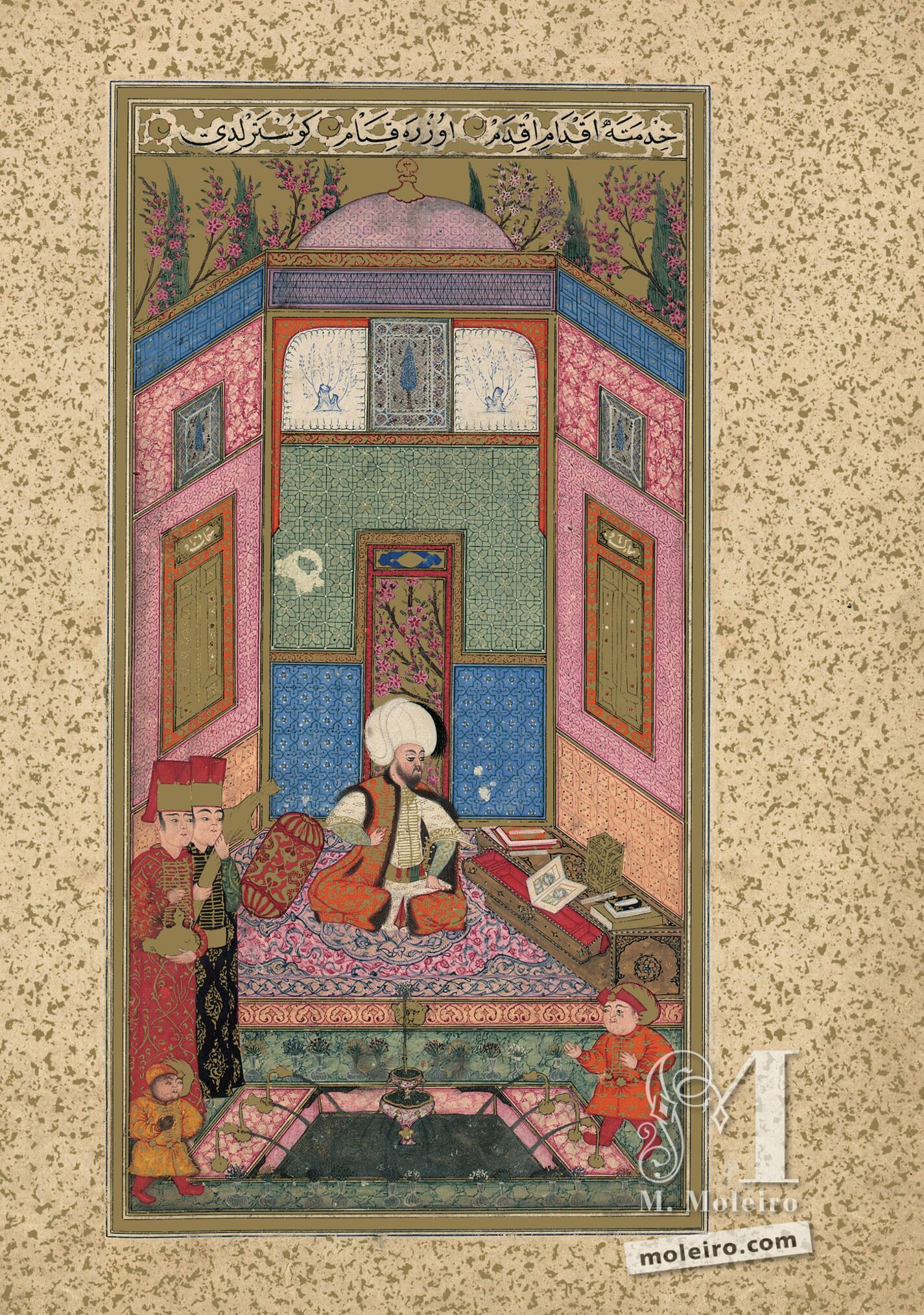The first illustration in the manuscript depicts the patron of the work, Sultan Murad III, who ordered at least two copies for two of his daughters of an illustrated codex composed in Baghdad in the late 14th century, the
Kitab al-bulhan (Oxford, Bodleian Library, Or. 133). The sultan sits cross-legged in the centre not only of the miniature, but also of a low platform, a “central medallion” carpet, the room and, symbolically, the world, as the
padishah (“the ruler of the universe”). He wears elaborate clothing with a sleeveless outer coat and the large turban typical of 16th century Ottoman sultans. Three colourful walls in the room, painted with an awkward perspective, are visible. The window behind him looks out onto the flowering garden behind the building, two other windows on the side walls are shut. The rest of the room is decorated with tile work, “marbleized” paint, blue on white drawings and three
qamariyya stained-glass windows with a cypress tree in the middle.
Standing in the foreground, below the low platform and in front of the sultan are two janissaries. One of them holds the royal sword inside a cloth bag and the other, a globular gold vessel with a narrow neck and domed lid which, if not merely a wine vessel, is probably another symbol of sovereignty. Two royal dwarfs entertain the sultan, playing on the edges of a fountain in the center of a pool, which also features six gold spouts each with an animal’s head pouring water into the pool.
The focus of the illustration, however, is on the position of Murad III’s head and what lies on the low desk on the right side of the painting. The sultan pores over and admires the manuscript resting on the open drawer of the desk with obvious satisfaction. The opening clearly shows illustrations of the signs of the zodiac and the decans as depicted on folios 8v to 30v of this codex. There is no doubt, therefore, that Murad III is marvelling at the very copy of the
Matalic al-sacada that was presented to him after completion in 1582. Other manuscripts are on the desk, emphasizing the sultan’s refinement and literary inclinations. Also on the desk is a tall, decorated, golden box possibly containing one of the clocks or mechanical wonders that Ottoman sultans and royalty were particularly fond of and which they often requested as gifts from the ambassadors of European courts in Istanbul.
Stefano Carboni
The Metropolitan Museum of Art
Curatorial Assistant in Islamic Art
(Fragment of the
Book of Felicity commentary volume)
